
- Index
- Material
- 30% Lead Crystal (21)
- Acrylic (4)
- Austrian Crystal (3)
- Boulder Opal (7)
- Crystal (409)
- Crystal, Glass (6)
- Crystal, Quartz (23)
- Fluorite (16)
- Glass (23)
- Labradorite (7)
- Malachite (5)
- Mixed Materials (16)
- Mookaite (3)
- Natural Crystal (10)
- Silver (3)
- Stainless Steel (5)
- Stone (7)
- Swarovski Crystal (31)
- Tiger's-eye (14)
- Vinyl (5)
- Other (3553)
- Mineral
- Pattern
- Shape
- Shipping
- Weight
332 Rutilated quartz 67ct, 5 pieces, oval carved shape, Brazil
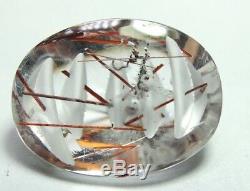
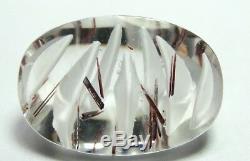
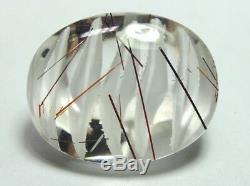
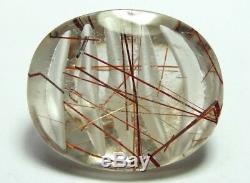


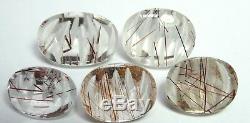


Quartz grows in many environments along with many different minerals. These minerals, as well as watery solutions and gas bubbles, can be enclosed by the growing crystal. Many minerals that would otherwise be chemically altered or dissolved when the local conditions change are protected from aggressive chemical agents when they have been embedded inside quartz crystals. Likewise, fragile minerals that are very soft, crumbly or that occur as fibers or thin needles survive inside.
Other partially embedded minerals might get dissolved at a later stage and leave ghostlike hollow forms behind. There are basically three ways inclusions can "get into the crystal". The minerals have formed before the quartz. The growing quartz crystals engulfs them and the original form of the included minerals is preserved. These inclusions are called protogenetic.
Included fibers than run through the entire crystal at random orientations are typical examples. Quartz crystals and the included minerals grow simultaneously.These inclusions are called syngenetic. The shape of the included minerals often deviates from the typical forms and habits that develop during unhindered growth. Crystals may be distorted beyond recognition and a non-destructive identification may pose a real problem even for a mineralogist. Sometimes inclusions cause the formation of phantoms.
Here the quartz crystal might have been partially encrusted by another mineral when growth halted transiently and continued later, such a case could be considered a syngenetical formation that got overgrown. Minerals can get into another mineral by exsolution. When the conditions during crystal growth allowed the incorporation of elements into the crystal lattice that are incompatible with the crystal structure at different temperatures or pressures, these elements may separate from the lattice to form new minerals once the conditions change.
Such inclusions are called epigenetic. Very often these inclusions are specifically oriented with respect to the crystallographic axes of the main crystal. The best example of a quartz with epigenetic inclusions is rose quartz. Since the included minerals, liquids, and gases are well protected from chemical alteration, quartz inclusions open a window to the past to the scientist.Many crystals carry inclusions, but quartz has a simple chemical composition and does not complicate the analysis of the included material too much and does not interfere with substances used in chemical tests. When the studied crystals are large and grew slowly - like rock crystals from alpine-type fissures - one can even observe systematic variations in the composition of the material that has been included during growth. In the central oldest part of the crystal, for example, the salt content of liquids might be higher, while the outer part of the crystal might contain more carbon dioxide.
Inclusions can also be used to estimate the temperature at which the crystals formed. The item "332 Rutilated quartz 67ct, 5 pieces, oval carved shape, Brazil" is in sale since Friday, February 2, 2018. This item is in the category "Collectibles\Rocks, Fossils & Minerals\Crystals & Mineral Specimens\Crystals". The seller is "gemsminas" and is located in Hong Kong, HK.
This item can be shipped worldwide.

